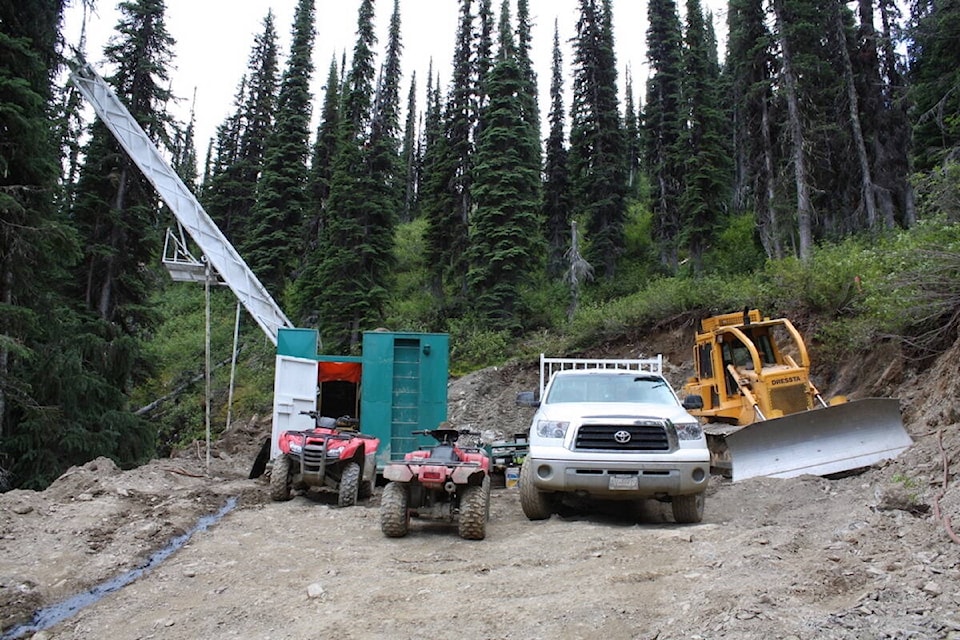Rachael Lesosky
Local Journalism Initiative Reporter
After an almost two-year-long wait, a Canadian mining company has finally received a mining exploration permit.
Taranis Resources Inc. will continue its explorations of the Thor project near Trout Lake, northeast of Nakusp in Ktunaxa traditional territory.
“We’re extremely happy,” John Gardiner, President and CEO of Taranis, told the Valley Voice. “It took two years and about $200,000 in lawyers’ fees to get to this point.”
Usually, permits are approved in about three months, he says.
The approval comes after the company filed a petition with the BC Supreme Court in October 2023. Gardiner said they believed that First Nations consultation and opposition were holding things up.
In the petition, Taranis asked the court to order the chief permitting officer to make a decision on the permit application. The company also asked the court to declare that Mines Minister Josie Osbourne’s statement that First Nations are “the rightful owners of the land,” and her reference to a “Ktunaxa-declared moratorium” are contrary to law.
Taranis argued that Minister Osborne’s statement could influence the permitting officers’ decisions.
The Ktunaxa Nation Council learned of the Thor project in January 2023. In November, it declared its opposition, citing concerns around cultural, archaeological, and ecological impacts.
“yaqan nuʔkiy identified that their traditional lands were under increasing development pressure without being provided any time for Ktunaxa people to develop a Ktunaxa-led vision and plan for the area,” read the November press release.
In the end, there was no court hearing. The government relented, and issued the permit. One of Minister Osbourne’s colleagues, said Gardiner, filed an affidavit explaining that Osborne’s declaration was a “political statement.”
“Sometimes, in my experience, politics and policy get intertwined,” said Gardiner. “When Minister Osbourne made that comment, what she said certainly wasn’t factual from a legal perspective. Obviously, she felt some desire or need to say it, and the explanation for it was that it was a political statement.”
The Valley Voice did not hear back from the Ktunaxa Nation before press time.
Next steps
With the five-year permit, Taranis has permission to work on 24 drill sites. Work will begin July 1.
According to a mineral resource estimate released on April 11, the Thor project is a mid-sized epithermal gold-silver deposit, over two kilometres long. Taranis hopes to explore a deeper porphyry target beneath the Thor deposit. The ‘Elephant,’ as it’s called, is likely the source of the Thor deposit. There is much evidence to support the Elephant’s existence, and the exploration permit hopes to confirm it.
Prior to the permit being issued, Taranis was in consultation with the Ktunaxa Nation and the Sinixt Confederacy of the Colville Confederated Tribes. This played a part in the permit getting issued, said Gardiner.
“Moving forward, we’ll be incorporating a lot of their suggestions,” he said.
Suggestions focus on protecting the flora and fauna of the area. Taranis will offer a training course for employees to educate them about Ktunaxa and Sinixt values, and the importance of plants and animals, like white bark pine, huckleberry, grizzly bears, and mountain caribou.
“At some point this summer, we’ll try to bring [the Ktunaxa and Sinixt] out to the site so they can see what we’re doing on the project, see how the drill works, where the bulk sampling plant is going to go,” said Gardiner.
Because the Thor project is an exploration-level project, meaning it is not yet a producing mine, consultation with the two nations is handled through the Ministry of Energy, Mines, and Low Carbon Innovation, based out of Cranbrook.
Eventually, when Thor turns into a producing mine, Taranis will consult directly with the Ktunaxa and Sinixt to create revenue agreements. The Ministry steps out of the picture, Gardiner said, and it becomes one-on-one between the nations and Taranis.
“A lot of people don’t understand that there’s no guarantee that exploration companies get anything back on the investments they make,” said Gardiner, who has spent 16 years working on the Thor project. “But if it turns into a mine and there’s more assurance that there’s going to be some revenue, then of course it’s shared with the local community and Indigenous peoples.”
